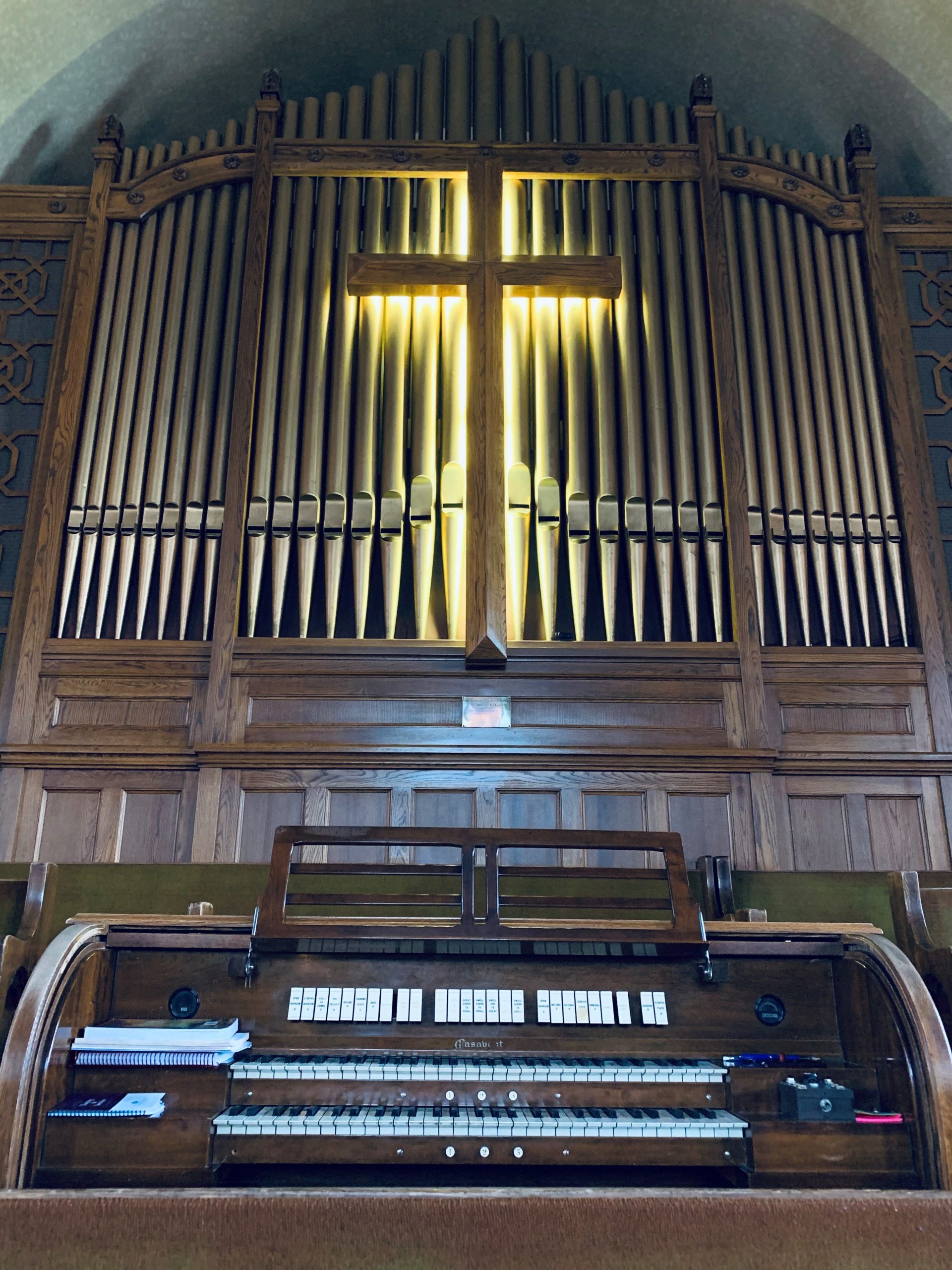Menu
© 2023 All rights Reserved. St. Andrew's United Church, Yorkton 29 Smith Street East, Yorkton, SK S3N 0H3 306.783.4157 office@standrewsyorkton.ca
As a welcoming and inclusive Affirming Ministry we believe in service, compassion and respect for all regardless of ability, economic circumstance, culture, race, gender, sexuality or faith.

By Kathy Morrell
Through the years, music has played a major role in the congregational life at St. Andrew’s. In the early days, the church used a sturdy high back piano to accompany the hymns. In 1937, the Board of St. Andrew’s decided to ask the congregation for a special donation, moneys to be used for the purchase of an electric organ. In 1946, the choir recommended the establishment of a Memorial Organ Fund to be used for a pipe organ dedicated “to the glory of God and in memory of those who gave their lives in the service of this country in two World Wars.” Faced with a lack of funds, the organ committee delayed its work. Someone or some group, however, was unwilling to give up. Two years later, the Board asked a Winnipeg agent of Casavant Freres of St. Hyacinthe, Quebec to determine a price for the pipe organ. The quote came in at $8000 to $9000 for purchase and installation, half the amount to be paid at purchase, the other half by bank loan. The project went ahead.
The installation called for major changes to the chancel. A large arched window was closed off in the north wall of the church. The front wall or façade was built some twelve feet from that wall creating a pipe room seventeen feet in height. In the middle section of the facade, the “pipes” were constructed – pipes in quotation marks because they do not produce the sound. They are there as a visual representation of the 764 real pipes located in the room behind. Behind the “pipes” are louvers the organist can open and close to control volume. The console in the choir loft controls the operations of the pipe organ.
On November 7, 1948, St. Andrew’s held a special service to dedicate the pipe organ. The church was filled to overflowing.
Since 1950, there have been only two organists at St. Andrew’s: Marie Dean and Shani Apland.
In 1950, Marie, her husband, and family moved to Yorkton from Swift Current. Almost immediately, Marie became involved at St. Andrew’s United Church. Soon after, Reverend Jones asked her to take over the position of organist. Without too much hesitation, she agreed despite the fact that she first had to learn the intricacies of the pipe organ. She had never played one before.
“Mom said the first morning she played at St. Andrew’s was a little daunting,” explained Dianne Holfeld, her daughter. “She discovered the Saturday before the service that the whole thing was to be broadcast over CJGX.”
In the early fifties, Marie took on the roles of both organist and choir director. At the time, there were two choirs: the intermediate girls’ choir (Grades 10-12) and the adult choir. Later Marie founded a children’s choir and a boys’ choir, too. She also raised a family, baked, sewed, taught piano lessons and conducted a great many choirs.
“And beside these activities, she taught any number of us to play the pipe organ,” explained Shani Apland.
“Mrs. Dean needed an assistant,” Shani noted. “With fifty children in the choir, she simply couldn’t conduct and play the organ at the same time. The organ students played at choir rehearsals, Junior Choir Services, CGIT Services and filled in during the summer.”
Marie Dean is remembered for her warm smile, her winning personality and her commitment to music.
Shani Apland became organist at St. Andrew’s when Marie retired after thirty-five years of service as organist. Someone once said, “Think of music in Yorkton and you think of Shani Apland.” Shani has been organist and choir director at St. Andrew’s United Church for thirty years or more. She has accompanied numerous students at the Yorkton Music Festival. She has taken an active role in the Yorkton Music Festival Association, taught numerous piano students and accompanied the cast in the musicals presented by Yorkton Community Theatre. In addition, she has been involved in the Yorkton Registered Music Teachers’ Association and the Saskatchewan Music Festival Association.”
I asked others about her work in the community and found that everyone you talk to comments on Shani’s willingness to help and her special way with people.
I set out to research and write about the history of the pipe organ at St. Andrew’s. But I have learned so much more. I have found that over the years, there has been a commitment from the congregation to music – a commitment that is on-going and strong. I have learned that the pipe organ seems to be at the heart of things at St. Andrew’s. It is there when the congregation gathers to worship. It is there at baptism, at confirmation, and at marriage. It is there at the end of life. Organ music encompasses the sacred. It reflects the joy and the sorrow of those who call St. Andrew’s home. It is a keystone in the community life of the congregation.
© 2023 All rights Reserved. St. Andrew's United Church, Yorkton 29 Smith Street East, Yorkton, SK S3N 0H3 306.783.4157 office@standrewsyorkton.ca